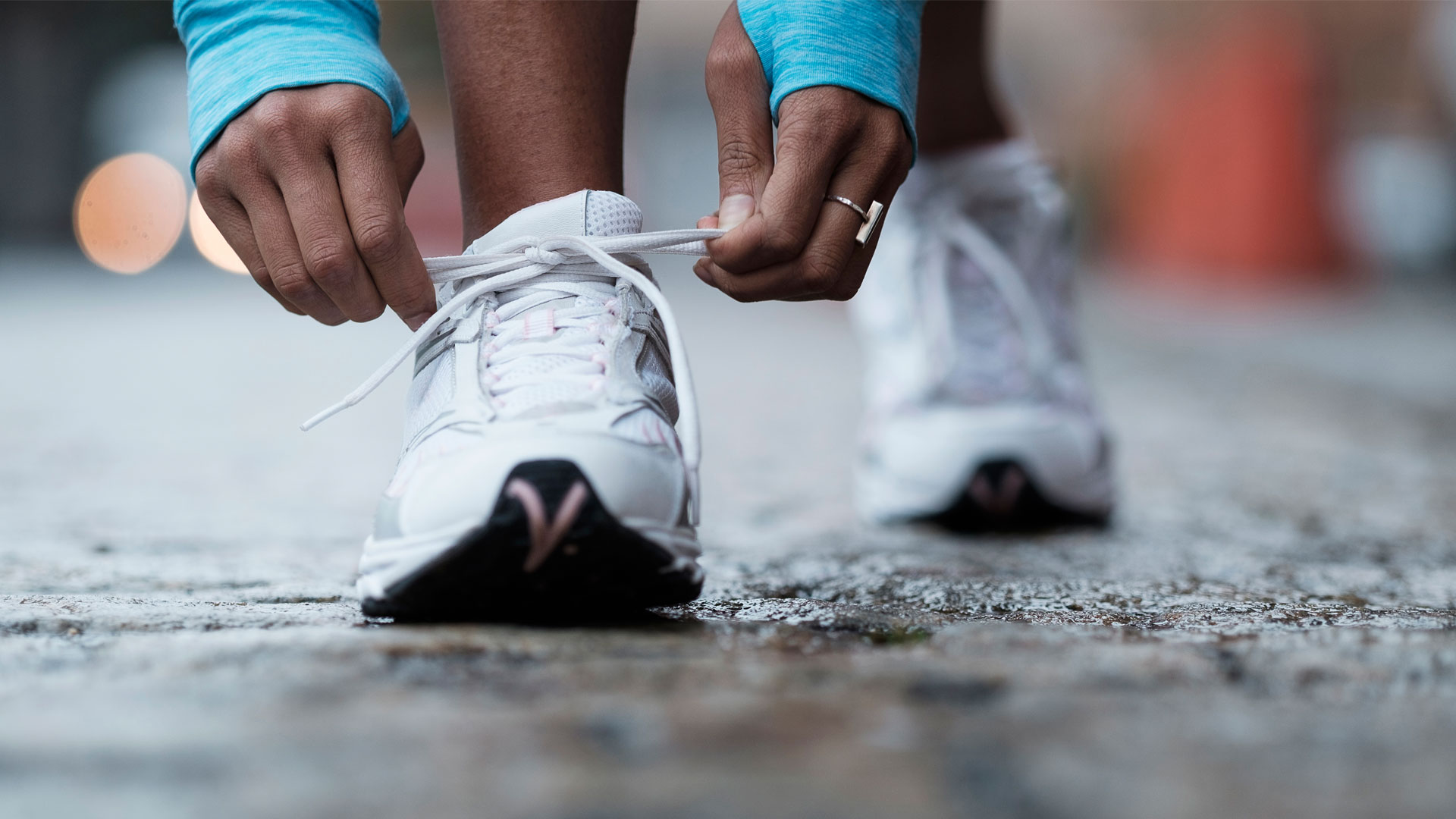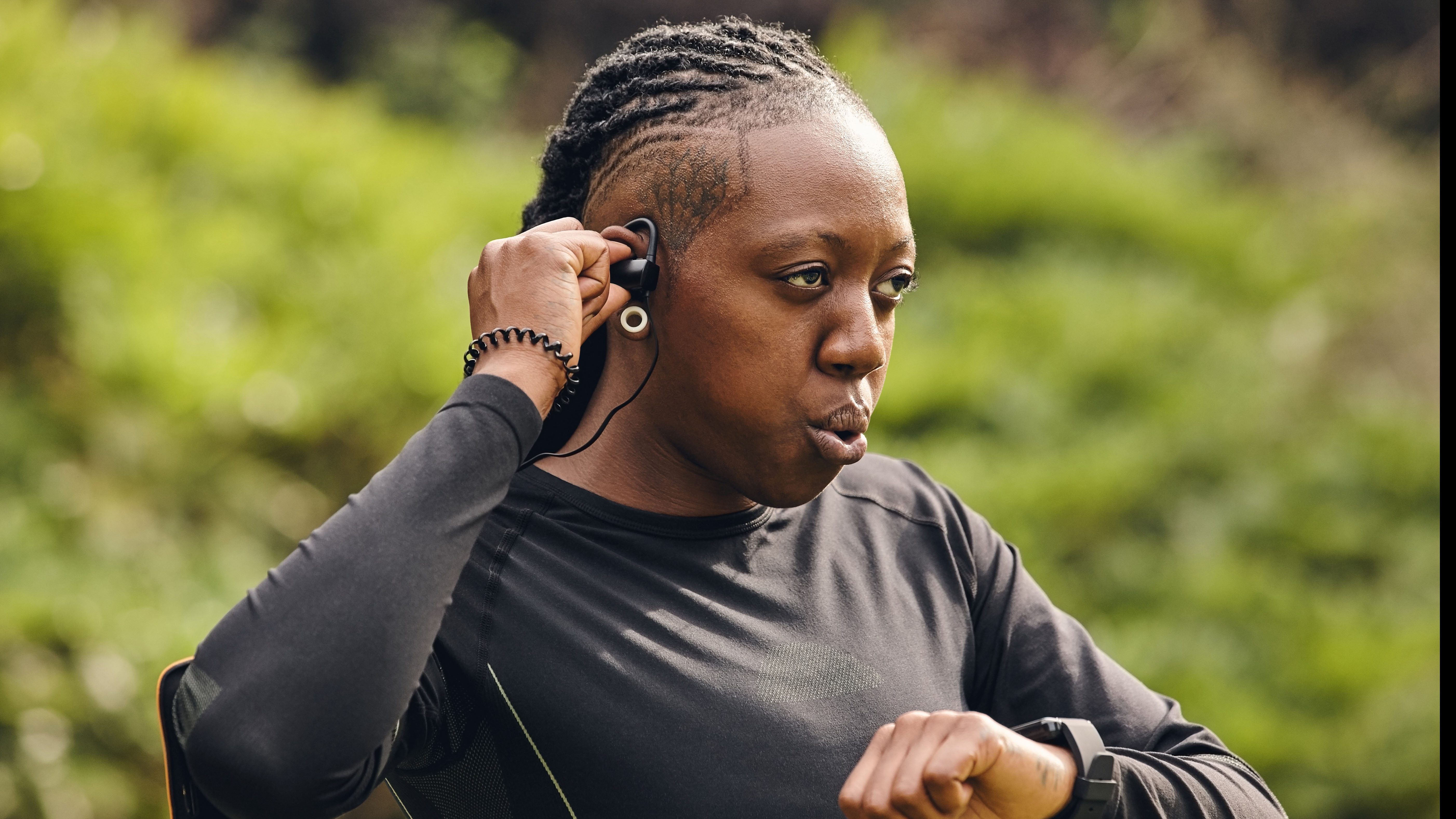How to run properly
Think you know how to run? We’ve got advice from the experts on how to do it properly.

Most of us know how to run on a basic level, but if you’re reading this then the chances are that you’re interested in honing your technique.
If you really want to do it properly, it’s time to break down the fundamentals – from how your feet should land, to what you should be doing with your arms and how to breathe while running. We asked a biokineticist for tips on how to fine tune your technique.
Find the right shoes
Your trainers should be snug around your heel, with wiggle-room for your toes and plenty of ankle support. You also need to ensure your trainers offer stability, cushioning, and grip.
“Invest in running shoes that are suitable for the structure of your foot,” recommends biokineticist Simon Maskell, founder of Maskell Biokineticists.
“Visit a trusted medical professional that specializes in running biomechanics and running footwear prescription, to ensure that you purchase the correct running shoe for you.”
The ideal running shoe will be unique to you and your particular style of running. For example, whether you need a rigid or flexible shoe will depend on the terrain you run on (uneven surfaces need a stiffer shoe.) You might also need specialist support in your shoe, depending on your running style, as discussed below.
It's a good idea to make sure the rest of your kit is up to standard too. Have a look through our guide to the best sports bras for running, if you need something solid to support your movement.
Get the world’s most fascinating discoveries delivered straight to your inbox.
- Read more: How running shoes should fit

Check your running style
According to recent research conducted by the University of Gothenburg, almost half of all recreational runners sustain injuries over a year, so it’s really important to address any concerns about your running technique from the start.
Runners tend to connect their foot with the floor in three different ways, all involving a rolling motion – pronation, supination, and neutral. The motion you use will determine how your body absorbs impact, and the subsequent effect it has on your joints, so it’s useful to understand what your feet are doing.
Pronation refers to an inward roll and helps to absorb energy upon contact with the ground. Pronated steppers tend to have lower foot arches, and while pronation itself isn’t an issue, overpronation can lead to injury.
Supination is the outward rolling of the foot and generally occurs if you have a high foot arch. Over supination can lead to the ankle rolling, through a lack of stability, though the best running shoes for supination can offer more support to lessen the risk of this happening.
Meanwhile, neutral pronation refers to landing on the outside of the heel, with a subsequent inward roll.
If you’re concerned you might be overpronating or oversupinating, it can help to get your gait analyzed by a professional. This can also determine the type of specialist support you might need, to keep you safe when pounding the pavement.
Pronated runners, for example, require plenty of stability to control their inward movement pattern, but supinated and neutral steppers will benefit from a neutral shoe. Those who find themselves striking with the heel may want to consider extra cushioning.

Work on your foot placement
Everybody is different, and you don’t have to hit the ground in one particular way. In fact, many runners may change their footstrike frequently depending on incline, fatigue, and speed.
However, Maskell recommends striking the road with the mid to forefoot portion of your foot to increase forward propulsion during the toe-off phase of the running cycle.
“Gently drift your bodyweight forwards to increase your forward momentum,” he says, “Then increase your running cadence to reduce your ground reaction force and reduce the risk of injury. You also want to avoid heel strike, where possible.”
- Read more: Correct running foot placement
Think about your pace
The best pace to run at will depend entirely upon the type of run you’re doing – it’s not just about running as fast as you can. You won’t want to run at the same pace for a sprint as you would for a 10km, so first you need to work out some goals. We've got a guide on how to start running, if you're a complete beginner.
“Run at a speed that is comfortable for you. If you start a running program at a pace that is too fast, you will place yourself at risk of injury,” Maskell advises. “Allow your body to adapt to the running requirements. When training to increase your speed, include interval-based training protocols of increased and decreased pacing sessions into your exercise program.”
It’s also good to think about your desired run time. For example, if you’re running your first 10km, what time do you want to finish? This will help you to calculate what pace you’d need to keep up to achieve this goal.
If you’re an experienced runner, chances are you’ve raced before or you’re sticking to a training plan, in which case you can begin to calculate your pace based on training times and previous runs.
It can be helpful to use one of the best running watches or best fitness trackers to monitor metrics such as pace, distance, and time and log your data for reference. You can also calculate distance based on your pace and run time.
Interestingly, research does suggest there is a perfect running pace (though it’s not one size fits all). One study, published in the Journal of Human Evolution, found that each person has a unique optimal running pace at which they will use the least amount of oxygen to cover a distance.
Don't forget your breathing

Running is an aerobic exercise which means the body requires plenty of oxygen to sustain it. A lot of research traditionally suggests taking the Goldilocks approach to breath: Breathing only through your nose? Too little. Breathing only through your mouth? Too much. Breathing through your nose and mouth? Just right.
Nasal breathing filters and warms the air you breathe, while oral breathing allows you to take in more oxygen. Because the aim is to achieve maximal oxygen uptake, you’re not able to achieve this using only nasal breathing.
There is a lot of back and forth around this subject. A study published in the European Journal of Applied Physiology in 2003 and further explored by the University of Delaware in 2017 suggested that runners breathing in a 2:1 (inhale for two, exhale for one) or 3:2 pattern in sync with footfall have the potential to run more smoothly, and for longer, and can maximize oxygen uptake.
However, research published in the Journal of Kinesiology and Sports Science actually suggested that practicing nasally-restricted breathing could improve the efficiency and endurance of runners over time. So different styles of breathing could net different benefits.
Sort out your arms
While you don’t want to be running around with your arms flailing in the air, arm movement is crucial to driving movement forwards.
“Use your arms to assist you with forward propulsion,” Maskell explains. “Drive your hands forward in line with your elbows. Try not to cause rotation of your upper body by allowing your arms to move across your midline as this will decrease your forward propulsion, increase your rotational force, and ultimately slow you down.”
It is also important to relax your shoulders and keep your hands close to your body.
Avoid common pitfalls
There is no one-size-fits-all approach to running, and many elite athletes run with varying styles. However, overstriding – going beyond your optimal stride length – when striking with the heel can increase injury risk and joint impact. This is partly due to landing with the foot too far away from the hip, and not having enough bend in the knees.
Another common pitfall is changing your foot strike (as mentioned above) without adjusting everything else that it affects. Adapting your footstrike affects your entire biomechanical make-up, from your hips to your stride length, so without addressing everything else in the chain you open yourself up to injury.
Above all, make sure you enjoy yourself. “Try not to run too far or too fast, too quickly,” Maskell says. “Take your time to enjoy running and increase your workload gradually.”
Further resources
- University of Gothenburg “Running-related injuries among recreational runners”, accessed March 2022.
- Journal of Human Evolution “Optimal running speed and the evolution of hominin hunting strategies”, accessed March 2022.
- The European Journal of Applied Physiology “Running training and adaptive strategies of locomotor-respiratory coordination”, accessed March 2022.
- University of Delaware “‘Breathe in, Breathe Out…Breathing during exercise”, accessed March 2022.
- International Journal of Kinesiology and Sports Science “Effect of Nasal Versus Oral Breathing on Vo2max and Physiological Economy in Recreational Runners Following an Extended Period Spent Using Nasally Restricted Breathing”, accessed March 2022.
- Journal of Athletic Training “Overstride-Induced Medial Knee Desmopathy: An Exploration Case Series”, accessed March 2022.

Sam Hopes is a level III fitness trainer, level II reiki practitioner, and resident fitness writer at Future PLC. Having trained to work with both the mind and body, Sam is a big advocate of using mindfulness techniques in sport and aims to bring mental wellbeing to the forefront of fitness. She’s also passionate about the fundamentals of training and how we can build more sustainable training methods. You’ll find her writing about the importance of habit-building, nutrition, sleep, recovery, and workouts.


